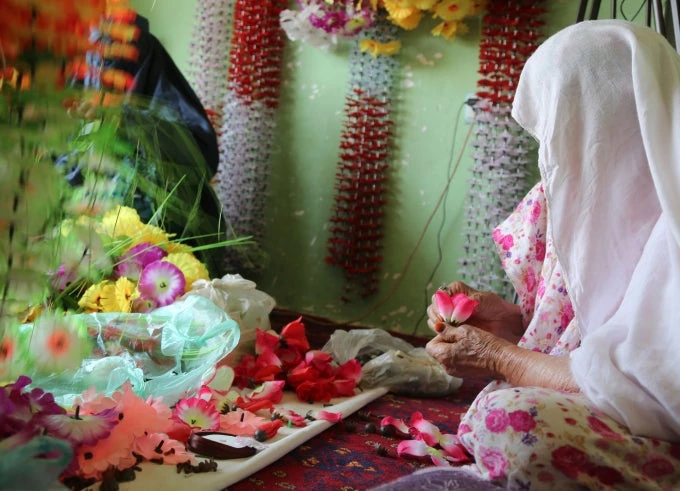
Earlier this year, I visited a meeting of a Village Savings and Loan Association in Doghabad village and was impressed with the confidence and leadership women showed. Addressing the association, Karimi, who is a member, said: “Do not wait for men to come and decide for you, be the makers of your own community.” She encouraged women to take an active role in the association’s weekly meetings, and come prepared with business proposals and requests for loans. Like Karimi, numerous individuals who have participated in the Afghanistan Enterprise Development Program (AREDP) programs act as inspirational leaders in mobilizing people and gaining trust in the program.
The program began its activities in Herat in 2010, and now covers four of the province’s 17 districts, encompassing 122 villages. It works with rural communities on projects to enhance economic activities at the grassroots level. Some of the program’s most significant initiatives include establishing Savings Groups, Enterprise Groups, and Producer Associations, as well as supporting small and medium enterprises to facilitate rural economic development.
With more than 400 industrial factories and an ancient tradition of trade and handicrafts, Herat has an environment of entrepreneurship and is one of the most developed and technologically advanced of the country’s 34 provinces. Supporting Herat as an economic zone will accelerate growth of other provinces in the region, particularly Badghis, Farah, and Ghor, leading to national development.
The need for sustainable economic solutions has steadily grown as international aid has dwindled in Afghanistan, sparking an economic recession across the country. AREDP aims to promote private sector growth across rural Afghanistan through market-oriented mechanisms for rural development. In promoting the private sector rather than providing dependence aid, AREDP subscribes to the idea that “if you give a man a fish you feed him for a day, but if you teach a man to fish you feed him for a lifetime.”
Local enterprises create jobs
In Herat, 1,128 Savings Groups, 176 Enterprise Groups, 9 Producer Associations, and 115 Village Savings and Loan Associations through 13,153 beneficiaries, including 8,201 women, have been established. Through these groups, community members in Herat have successfully mobilized more than 47 million afghanis (about $680,000) from their own savings and created job opportunities through loans to 6,382 borrowers, 58 per cent of whom are women.
“No one believed that a starting savings of 30 afghanis (about 43 US cents) by an individual would reach such a point that now our village enterprises employ over 50 people,” says Mohammad Ewaz Noorzai, head of the Village Savings and Loan Association in Domjoy village, Enjil district, which has five Enterprise Groups in dairy, poultry, and handicrafts.
The more participants learn about the program’s short and long-term impact, the more the program fosters an environment of trust and partnership. This in turn creates a sense of ownership and community responsibility to save money, participate in community financial groups, initiate investments and entrepreneurship, employ locals, and generate income. “The Savings Groups have increased friendliness among us,” says Fariha Karimi, a member of one such group in Doghabad village. “We share ideas and discuss possible benefits of enterprises to initiate.”
Enterprise development through such enabling interventions not only supports economic sustainability with immediate outcomes, but also leads to poverty reduction via enhancing human capacities, social inclusion, and access to finance, education, and health.
Challenges
Of course, AREDP’s model is not free from challenges. However, with sufficient raw materials, underdevelopment, and a cheap labor force, we see a local economy in Afghanistan’s rural villages that is ripe for development.
As a government-led initiative, the program has contributed to community-based rural economic development activities that have provided villages—the building blocks of Afghanistan—with sustainable structures for income generation. AREDP’s role is that of a ‘development initiator,’ leading to reduced aid dependence and nurturing investments to create value chains. These activities bring hope for development.

Join the Conversation